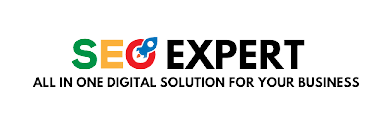On-Page SEO: The Ultimate Guide to Optimize Your Website
What is On-Page SEO?
On-page SEO, also known as on-site SEO, refers to the practice of optimizing individual web pages to rank higher and earn more relevant traffic in search engines. This involves both the content and the HTML source code of a page, as opposed to off-page SEO, which refers to external signals like backlinks.
Importance of On-Page SEO
On-page SEO is crucial because it helps search engines understand your website and its content, as well as identify whether it is relevant to a searcher’s query. As search engines become more sophisticated, there is a greater focus on relevance and semantics in search engine results pages (SERPs).
Understanding Search Engine Algorithms
How Search Engines Work
Search engines use complex algorithms to crawl, index, and rank web pages. These algorithms consider a variety of factors to determine how well a page answers a search query.
Key Factors Search Engines Consider
- Relevance: How closely a page matches the search query.
- Authority: The credibility of the website and its content.
- User Experience: Page load speed, mobile-friendliness, and overall usability.
Keyword Research
Importance of Keywords
Keywords are the terms and phrases that searchers enter into search engines. They are fundamental to on-page SEO because they help define the topic of your content and match it with search queries.
Tools for Keyword Research
- Google Keyword Planner
- Ahrefs
- SEMrush
- Ubersuggest
Long-Tail vs. Short-Tail Keywords
- Short-Tail Keywords: Broad and general keywords (e.g., "shoes").
- Long-Tail Keywords: More specific and targeted phrases (e.g., "women's running shoes").
Title Tags
What are Title Tags?
Title tags are HTML elements that specify the title of a web page. They are displayed on SERPs as the clickable headline for a given result and are important for usability, SEO, and social sharing.
Best Practices for Title Tags
- Keep it Under 60 Characters: This ensures the full title is visible in search results.
- Include Target Keywords: Place important keywords closer to the beginning.
- Be Descriptive: Clearly indicate what the page is about.
- Avoid Keyword Stuffing: Don't overuse keywords; they look spammy.
Meta Descriptions
What are Meta Descriptions?
Meta descriptions are brief summaries of a web page’s content. They appear below the title tag in search results and can influence click-through rates (CTR).
Crafting Effective Meta Descriptions
- Keep it Under 160 Characters: Ensure the entire description is visible.
- Include a Call to Action: Encourage users to click on your link.
- Use Keywords Wisely: Include relevant keywords naturally.
Header Tags
Role of Header Tags
Header tags (H1, H2, H3, etc.) are used to structure content hierarchically. They help search engines understand the main topics of your content and improve readability for users.
Best Practices for Using Header Tags
- Use One H1 Tag per Page: This should be the main title of the page.
- Use H2 for Subheadings: Break down content into sections.
- Use H3 and H4 for Subsections: Further, divide content into smaller parts.
- Include Keywords: Use relevant keywords in your headers naturally.
Content Optimization
Importance of Quality Content
High-quality content is essential for on-page SEO. It should be valuable, engaging, and relevant to your target audience.
Keyword Density and Placement
- Optimal Keyword Density: Aim for 1-2% keyword density.
- Strategic Placement: Include keywords in the first 100 words, headers, and throughout the content naturally.
Content-Length and Structure
- Long-Form Content: Longer content tends to rank better.
- Clear Structure: Use paragraphs, bullet points, and subheadings to enhance readability.
Image Optimization
Alt Text and Titles
- Alt Text: Describe the image for accessibility and SEO.
- Image Titles: Provide additional context for images.
Image Compression and Format
- Compression: Reduce file sizes without losing quality to improve page speed.
- Format: Use appropriate formats like JPEG for photos and PNG for graphics.
Internal Linking
Importance of Internal Links
Internal links help search engines understand the structure of your website and establish a hierarchy. They also distribute page authority and help users navigate your site.
Strategies for Effective Internal Linking
- Use Descriptive Anchor Text: Use keywords that describe the linked page.
- Link to Relevant Content: Ensure links add value to the reader.
- Maintain a Logical Structure: Create a clear and logical internal linking strategy.
URL Structure
SEO-Friendly URLs
- Keep it Simple: Use readable URLs with relevant keywords.
- Avoid Special Characters: Use hyphens instead of underscores.
Best Practices for URL Structure
- Include Keywords: Reflect the page’s content.
- Use Lowercase Letters: Avoid capital letters in URLs.
- Keep it Short: Aim for concise URLs.
Mobile Optimization
Importance of Mobile-Friendly Design
With the increasing use of mobile devices, ensuring your website is mobile-friendly is critical for SEO and user experience.
Tips for Mobile Optimization
- Responsive Design: Ensure your site adapts to different screen sizes.
- Fast Loading Times: Optimize images and use efficient coding practices.
- Easy Navigation: Simplify menus and ensure buttons are easily clickable.
Page Load Speed
Impact of Page Speed on SEO
Page speed is a crucial ranking factor. Slow pages can negatively impact user experience and lead to higher bounce rates.
Tools to Measure and Improve Page Speed
- Google PageSpeed Insights
- GTmetrix
- Pingdom
User Experience (UX)
Role of UX in SEO
A positive user experience can lead to longer dwell times, lower bounce rates, and higher engagement, all of which are beneficial for SEO.
Tips to Enhance User Experience
- Intuitive Navigation: Make it easy for users to find what they need.
- Readable Content: Use clear fonts, adequate spacing, and bullet points.
- Engaging Design: Use visuals, interactive elements, and consistent branding.
Technical SEO
What is Technical SEO?
Technical SEO involves optimizing the infrastructure of your website to ensure that search engines can crawl and index it efficiently.
Key Technical SEO Elements
- XML Sitemaps: Help search engines understand the structure of your site.
- Robots.txt File: Direct search engine crawlers on which pages to crawl.
- Canonical Tags: Prevent duplicate content issues.
Conclusion
On-page SEO is an integral part of your overall SEO strategy. By focusing on optimizing individual elements of your web pages, you can improve your search engine rankings, drive more organic traffic, and enhance the user experience. Keep your content relevant, your site technically sound, and your focus on providing value to your audience.
FAQs
What is the difference between On-Page and Off-Page SEO?
On-page SEO refers to optimizing the content and HTML source code of your website's pages. Off-page SEO involves external factors like backlinks and social signals.
How often should I update my on-page SEO?
Regularly updating your on-page SEO is important. Aim for a review every few months to keep up with algorithm changes and ensure your content remains relevant.
Can I do on-page SEO by myself?
Yes, many on-page SEO tasks can be done by yourself, especially with the help of various SEO tools. However, for more complex issues, consulting with an SEO expert might be beneficial.
How long does it take to see results from on-page SEO?
Results can vary, but typically it takes a few weeks to a few months to see significant changes in rankings and traffic after implementing on-page SEO improvements.
What are the common mistakes to avoid in on-page SEO?
Common mistakes include keyword stuffing, neglecting meta tags, having duplicate content, slow page load times, and poor mobile optimization.



.png)

